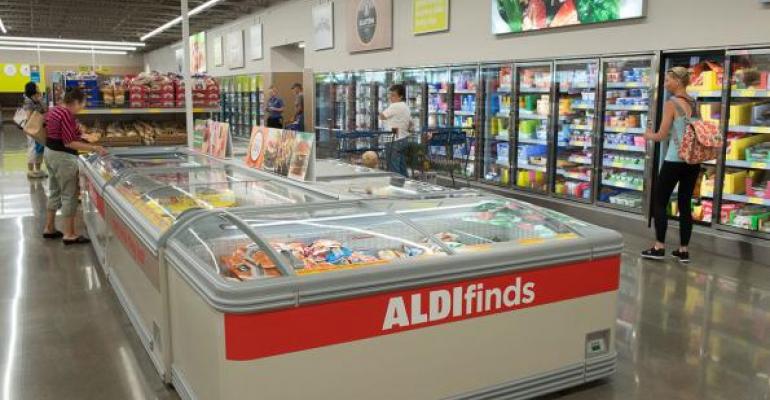When you hear about disruption in the grocery industry you probably think of Amazon, but watch out for Aldi, it’s more disruptive than you might think. Why? The formerly bare bones EDLP that stocked mainly shelf-stable goods has transformed itself into an effective promotional retailer — without surrendering the low price position. And it is growing fast. Forty years ago Aldi opened its first store in Iowa; soon there will be 1,800+ units in the U.S.
I spent a lot of time last year visiting different Aldi stores with fellow retail veteran Bill Bolton to record how the transformation is progressing. (Bolton has held leadership positions in both large supermarket chains and national wholesalers.) Here’s what we see happening on the shelves, in the aisle, and even on the walls and in the flyer.
Heads up
The way Aldi is executing its new strategy makes it a powerful, perhaps underappreciated, disruptive force in a competitive marketplace that’s currently being squeezed between two growing pressures: How to match low prices and how to pay for additional services like online grocery.
So what is Aldi doing?
 1. Expanding the product mix to include more high-margin, gross profit generators: more premium own-brand products, more perimeter goods like packaged meats, produce, dairy and frozen products, and more general and seasonal merchandise.
1. Expanding the product mix to include more high-margin, gross profit generators: more premium own-brand products, more perimeter goods like packaged meats, produce, dairy and frozen products, and more general and seasonal merchandise.
2. Creating new marketing capabilities. Aldi has developed clear and compelling marketing capabilities and uses a wide variety of themes such organics and Father’s Day while maintaining a disciplined focus on competitive pricing for often-purchased consumables like eggs, milk and bananas.
3. Leveraging total store merchandising. Aldi doesn’t seem to manage or look at the business by department or category, which makes it much easier for the whole store to market to a theme without having to negotiate across the kind of department and category silos that exist in so many traditional store models.
4. Generating profit reserves for driving end-of-month traffic. There’s plenty of money in the market at the beginning of the month, but by the end it runs out so retailers often have to fight for their share. Aldi manages this predictable cycle by generating profit reserves early in the month that they can reinvest in driving traffic at the end of the month. Their promotional flyer pace matches the rhythm, too. Circulars are 12 pages at the first of the month and eight pages of hot-priced items at the end.
The net result: More disruption, more fragmenting on the price dimension
As Aldi expands their presence in the marketplace, they are attracting more shoppers and carving out a space that’s going to put more pressure on grocers who are struggling with the twin costs of matching low prices and expanding service.
Get into an Aldi today, and see how the new product mix extends their appeal to more consumers. The low prices make shoppers feel smart because they’re getting a good value, and their marketing and merchandising practices are quite effective and often more efficient than traditional competitors can manage.
When the opening price points in a market are lost to Aldi, it leaves the rest of the market trying to figure out how to respond. This is why Aldi is disruptive — and maybe even more disruptive than Amazon. What do you think?





